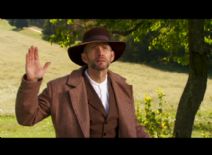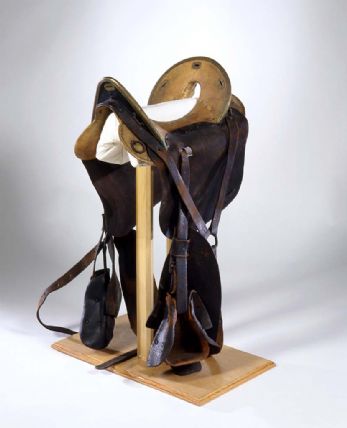As COVID-19 deaths spiked in 2020, Suzanne Firstenberg’s public art installation "In America: How could this happen…"
History Explorer Results (11)
Related Books (0)

Grade Range:
5-12
Resource Type(s):
Interactives & Media
Date Posted:
3/1/2016
Investigate the market revolution in the 1800s through the stories of five Americans from the Merchant Era. Optimized for desktops and laptops.

Grade Range:
6-12
Resource Type(s):
Artifacts, Primary Sources
Date Posted:
9/3/2020
The American Party, also called the Know-Nothings, was a major national political force in the 1850s. It saw immigrants and Catholics as the greatest threat to self-government and to the nation. Arguing for rule by native-born Protestants, the Know-Nothings ran former President Millard Fillmore as t

Grade Range:
K-12
Resource Type(s):
Artifacts, Primary Sources
Date Posted:
9/3/2020
Pennsylvania Germans near the Conestoga River first made Conestoga wagons around 1750 to haul freight. By the 1810s, improved roads to Pittsburgh and Wheeling, Virginia (now West Virginia) stimulated trade between Philadelphia, Baltimore, and settlers near the Ohio River. Wagoners with horse-drawn C

Grade Range:
8-12
Resource Type(s):
Reference Materials
Date Posted:
3/1/2016
How does American business affect you? How and why has it changed since the United States began? Come explore stories of business men and women who have changed the world. See hundreds of intriguing objects that illustrate transformations in society. Think about how Americans have mixed capitalis

Grade Range:
K-12
Resource Type(s):
Artifacts
Date Posted:
11/7/2012
This ambrotype portrait of Mea-to-sa-bi-tchi-a, or Smutty Bear, a Yankton Dakota, is among the first photographic images of Native Americans. Smutty Bear was part of a large Native American delegation that came to Washington, D.C., during the winter of 1857–58. Under duress, members of the dele

Grade Range:
8-12
Resource Type(s):
Interactives & Media, Lessons & Activities
Duration:
135 minutes
Date Posted:
8/3/2012
In this lesson, students will examine the difference between history and memory by debating the legacy of John Brown. Using video clips of an actor playing Brown, students are invited to debate his actions and determine how history should remember him. The video segments are also avai

Grade Range:
5-12
Resource Type(s):
Artifacts, Primary Sources
Date Posted:
12/17/2010
Captain George B. McClellan toured Europe with a military commission looking at new military tactics. He returned and developed a new modified cavalry saddle. In 1859, the U.S. War Department adopted the McClellan saddle. They remained the standard issue throughout the history of the horse cavalr

Grade Range:
5-12
Resource Type(s):
Artifacts, Primary Sources
Date Posted:
12/15/2010
The Kansas-Nebraska Act of 1854 allowed the two states to decide the issue of slavery by a popular ballot. The fight in Kansas was so intense that the state earned the nickname “Bleeding Kansas.” John Brown bought 2,000 of these revolvers and sent them to Kansas for the “Free-Soilers.”

Grade Range:
9-12
Resource Type(s):
Lessons & Activities
Duration:
90
minutes
Date Posted:
9/21/2010
In this lesson, students will examine primary sources to understand John Brown’s actions in Harpers Ferry and will develop a creative project on his legacy. This resource was produced to accompany the exhibition The Price of Freedom: Americans at War, by the Smithsonian’s Nat

Grade Range:
K-12
Resource Type(s):
Artifacts, Primary Sources
Date Posted:
11/4/2008
This telegraph register, manufactured in accord with the Morse patent, was installed in 1848 in South Bend, reputedly the first telegraph office in Indiana. Stamped on the base is "j. Burritt & son ithaca." Pulses of electricity caused the two vertical electromagnets (on the right) to pull ag









